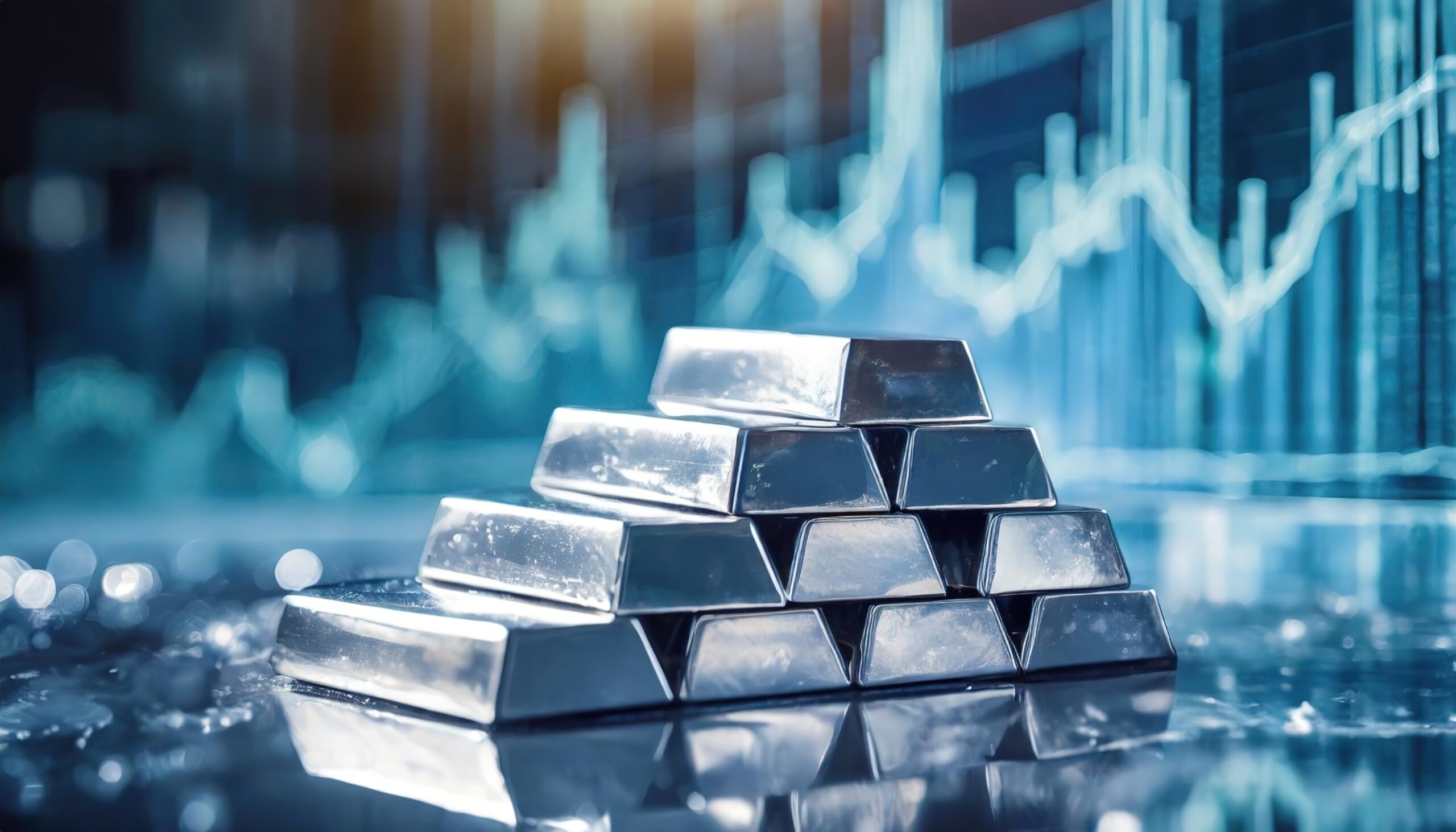The Silver Surge: Exploring the Potential for Silver to Outvalue Gold
For centuries, gold has reigned supreme in the world of precious metals, consistently commanding a higher price per ounce than its silver counterpart. However, as global economic landscapes shift and industrial demands evolve, a provocative question emerges: Could silver ever be worth more than gold? If they’re deciding whether it’s smarter to invest in silver or buy gold, San Diego residents should keep reading as we delve into the factors that influence the values of these precious metals and explore scenarios where silver might potentially outshine gold in the market.
The Historical Relationship between Silver & Gold
The Gold-to-Silver Ratio
To understand the relationship between silver and gold, we must first look at the gold-to-silver ratio. This ratio represents how many ounces of silver it takes to purchase one ounce of gold. Historically, this ratio has fluctuated widely, from as low as 1:1 in ancient Egypt to as high as 100:1 in recent times. When the ratio is low, silver is relatively more valuable compared to gold, and when the ratio is high, gold is more valuable. For silver to be worth more than gold, this ratio would need to drop below 1:1—a significant deviation from historical norms. Today, the ratio typically hovers around 75:1, meaning it takes about 75 ounces of silver to buy one ounce of gold.
Price Movements Over Time
While both metals have seen significant price fluctuations over the years, gold has consistently maintained a higher value per ounce. Silver’s price tends to be more volatile, often experiencing sharper increases during bullish markets and steeper declines during bearish periods. This volatility is partly due to silver’s smaller market size, which makes it more susceptible to supply and demand shifts.
Historical Precedents & Speculation
Historically, there have been brief periods when silver outperformed gold, but these instances have been rare and short-lived. For example, during the Hunt Brothers’ silver market manipulation in the late 1970s and early 1980s, silver prices skyrocketed, briefly narrowing the gold-to-silver ratio. However, such occurrences were driven more by market speculation and manipulation than by genuine economic fundamentals. For silver to truly surpass gold in value on a sustained basis, there would need to be a profound shift in the market dynamics driven by sustained demand, dwindling supply, or a radical change in investor behavior.
Factors that Could Drive Silver’s Value Higher
Industrial Demand
One of the most compelling arguments for silver’s potential value increase is its growing industrial demand. Unlike gold, which is primarily used for jewelry and as a store of value, silver has numerous industrial applications. It’s used in electronics, solar panels, medical devices, and water purification systems, among others. If industrial demand for silver were to surge—perhaps due to advancements in technology or an increase in green energy initiatives—the value of silver could rise dramatically. Conversely, if gold demand were to stagnate or decline, the price gap between the two metals could narrow, potentially bringing silver closer to gold in terms of value.
Limited Supply
While silver is more abundant in the Earth’s crust than gold, easily accessible silver deposits are becoming increasingly scarce. Many silver mines have already been depleted, and new discoveries are rare. Moreover, a significant portion of silver is produced as a byproduct of mining other metals, which means its supply isn’t always responsive to market demand.
Investment Demand
In times of economic uncertainty, investors often turn to precious metals as safe-haven assets. While gold has traditionally been the go-to choice, silver is gaining popularity among investors. Its lower price point makes it more accessible to small investors, and its potential for higher percentage gains attracts those seeking greater returns. If investment demand for silver were to increase dramatically, it could drive prices up significantly.
Economic & Geopolitical Factors
Central banks’ monetary policies, particularly those involving quantitative easing and low interest rates, can lead to currency devaluation and inflation. In such scenarios, both gold and silver tend to perform well as stores of value. However, silver’s lower price and higher volatility could potentially lead to more dramatic price increases in percentage terms.
If global economic conditions were to shift significantly, making gold less attractive or less reliable as a store of value, silver might become a more viable alternative. For example, if a country or large economic bloc were to prioritize silver in their reserves due to its dual role as both a precious and an industrial metal, the demand could push silver prices upward relative to gold.
Challenges to Silver Outvaluing Gold
While the scenarios listed above are theoretically possible, several challenges make them unlikely.
Cultural & Historical Significance
Gold’s status as the premier precious metal is deeply ingrained in human culture and history. It has been used as a symbol of wealth and power for thousands of years, and this psychological factor plays a significant role in maintaining its value. For silver to surpass gold, it would need to overcome this deeply rooted perception.
Storage & Transportation Costs
Due to its lower value per ounce, silver is more expensive to store and transport in large quantities compared to gold. This factor could limit institutional investment in silver, potentially capping its price growth.
Market Size & Liquidity
The gold market is significantly larger and more liquid than the silver market. This means large investments can be made in gold without drastically affecting its price, whereas similar investments in silver could cause more significant price swings. This volatility might deter some large investors from heavily investing in silver.
Scenarios Where Silver Could Potentially Outvalue Gold
While it’s unlikely that silver will surpass gold in value per ounce in the near future, there are some extreme scenarios where it could theoretically happen.
Technological Revolution
Advances in technology could play a role in altering the silver-to-gold ratio. Silver is a key component in many emerging technologies, such as electric vehicles, solar energy, and electronics. If a groundbreaking technology emerged that required vast amounts of silver—for example, a new type of battery or computing device–it could create unprecedented demand. This demand shock could potentially drive silver prices to extraordinary levels.
Supply Disruption
A severe disruption in silver supply, such as the discovery that silver deposits are far more limited than previously thought, could cause a supply shock. Coupled with increased demand, this could lead to a dramatic price increase.
Shift in Investor Sentiment
If a significant portion of gold investors were to suddenly shift their focus to silver, perhaps due to a change in perception about its potential returns or a belief in its industrial importance, it could cause silver prices to soar while potentially depressing gold prices.
The Silver Lining
While it’s highly improbable that silver will outvalue gold on a per-ounce basis in the foreseeable future, the potential for significant price appreciation in silver shouldn’t be overlooked. The unique combination of its industrial utility and its role as a precious metal makes silver an intriguing option for investors and speculators alike.
As we move toward a more technologically advanced and sustainable future, silver’s importance is likely to grow. Whether it’s in the production of solar panels, electric vehicles, or yet-to-be-invented technologies, silver will play a crucial role. This increasing demand, coupled with potential supply constraints, could lead to substantial price increases.
For investors, the question shouldn’t necessarily be whether silver will outvalue gold but whether it presents a compelling investment opportunity in its own right. Its lower price point, higher volatility, and potential for growth make it an attractive option for those looking to diversify their precious metals holdings.
While silver may not dethrone gold as the king of precious metals anytime soon, it certainly has the potential to shine brightly in the coming years. As with any investment, thorough research and careful consideration of one’s financial goals and risk tolerance are essential before making any decisions. The silver market may be volatile, but for those willing to weather the fluctuations, it could offer a silver lining to their investment portfolios.
When they’re looking for the best place to sell or buy silver bars, San Diego collectors call on the professionals at First National Bullion. We buy and sell all kinds of precious metals, including silver, platinum, and gold. If you’re looking for trustworthy dealers and high-quality service, give us a call today to speak with one of our precious metals experts.
The statements made in this blog are opinions, and past performance is not indicative of future returns. Precious metals, like all investments, carry risk. Precious metals and coins may appreciate, depreciate, or stay the same in cash value depending on a variety of factors. First National Bullion does not guarantee, and its website and employees make no representation, that any metals for sale will appreciate sufficiently to earn the customers a profit. The decision to buy, sell, or borrow precious metals and which precious metals to purchase, borrow, or sell are made at the customer’s sole discretion.


